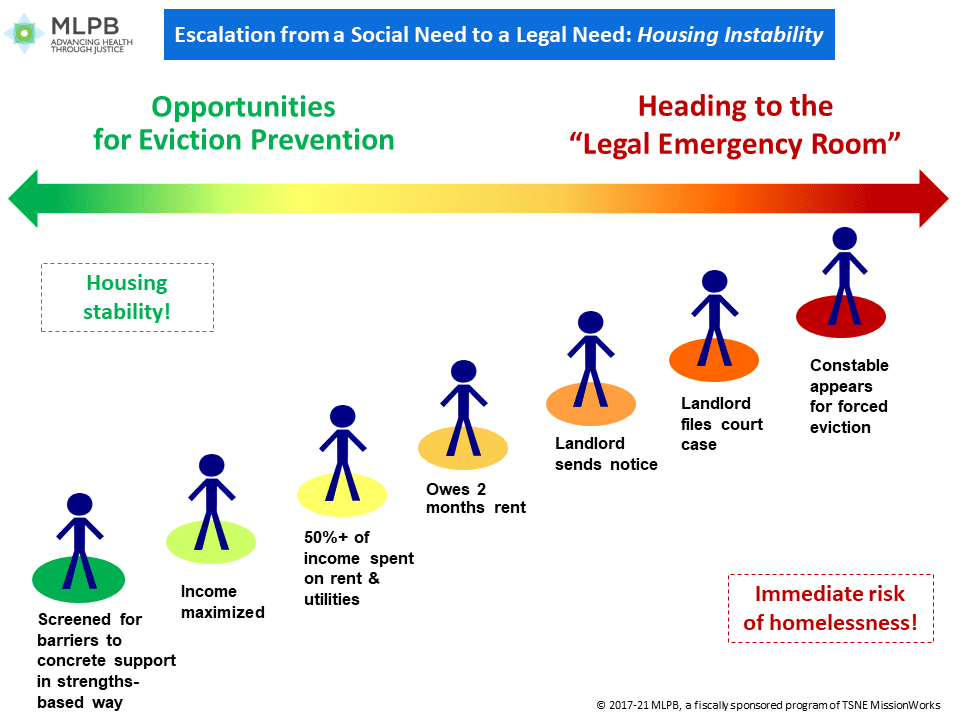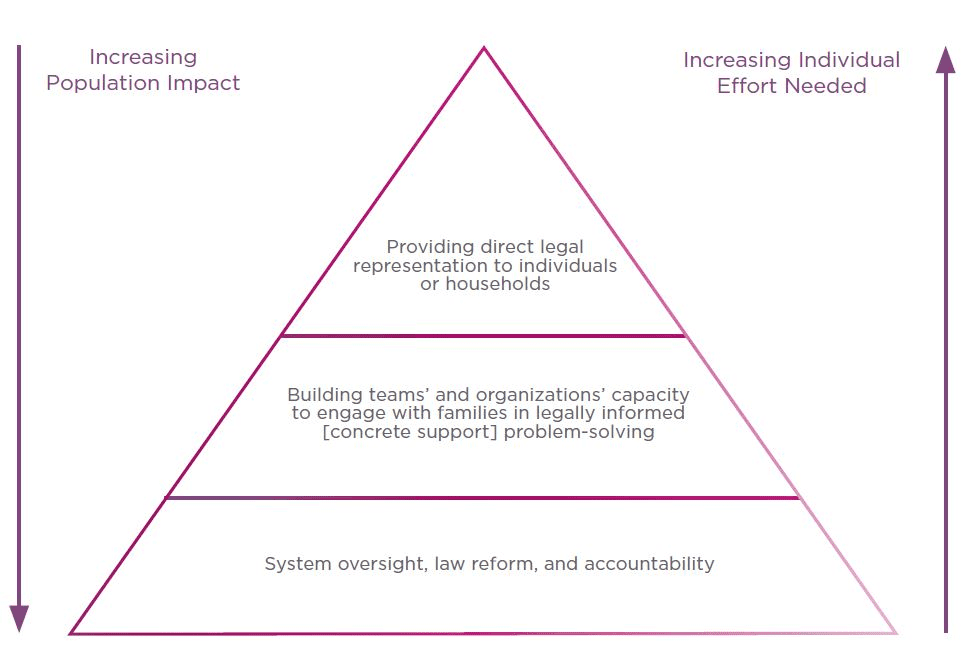by Samantha Morton, CEO
October 4, 2019
How we support young children and their families to not merely survive but thrive is a measure of our integrity as a society. Too many families living in the United States confront barriers to resources, services, and legal protections that can promote housing stability, food security, and personal safety, among other things – and these barriers converge to create early life stress and, in turn, worsen health and well-being over the life course. Against this backdrop, MLPB was honored to partner with CSSP and the JPB Foundation to bring Legal Partnering for Child and Family Heath: An Opportunity and Call to Action for Early Childhood Systems to life – spotlighting an important and under-utilized lever that can expand the “toolbox” of strategies available to connect more families with the supports they need and want.
In the healthcare context, these barriers – when they operate at the individual or household level – are increasingly referred to as health-related social needs; in the early childhood system context, they are understood as barriers to concrete support in times of need, a Strengthening FamiliesTM protective factor. To learn more about the important difference between health-related social needs and social determinants (dimensions) of health, check out this important blog.
Got rights? You bet families do.
They impact child and family health and well-being.
And they matter well before getting to the courthouse door.
Legal partnering is about more than connecting individuals and families to scarce public interest lawyers to represent them in housing and family law cases – at which point the stakes for children and families are exquisitely, unacceptably high. An eviction for non-payment of rent does not appear out of nowhere, but rather evolves in ways illustrated by this graphic.

The trajectory of an eviction case reflects a continuum of prevention opportunities, nodes at which eviction risks can be detected and often managed (e.g., income loss due to illness or employer wage theft, unlawful reduction or termination of SSI/TANF/SNAP benefits, landlord retaliation re: a tenant’s lawful request that unhealthy housing conditions be remediated, and much more). That’s why MLPB is committed to building the problem-solving capacity of health, human services, and early childhood workforce members who – by virtue of their increasingly strengths-based relationships with families – are often the trusted “first responders” to families confronting barriers to resources and legal protections.
Got lawyers? Most people don’t.
Systems of care must innovate to assure that families can access
the resources they want and for which they are legally eligible.
That’s why MLPB pioneered the “team-facing” legal partnering model described in the brief – to build and sustain role-appropriate legal problem-solving capacity in valued workforce colleagues. Importantly, this role is an intentional capacity-building function focused on supporting allied colleagues who are in direct service – and often high-trust problem-solving – relationships with families. The role does not involve provision of direct legal representation to individuals or families, though this work can (and should) support improved facilitation of such resource connections for families. Rather, team-facing legal partnering:
- Prioritizes a range of legal partner contributions to team-based care that keep individual-, family- and population-level legal risks, rights and remedies front-and-center in system design, program implementation, and policy development; and
- Commits to integration as opposed to co-location, through embedding in regularized interdisciplinary team meetings, among other things. Indeed, a team-facing legal partner is accountable to the team it is supporting for the accuracy, quality, and comprehensiveness of the legal information and support it is supplying. (This has implications for sound structuring and staffing of this role, to be covered in forthcoming material.)
Got the Big Picture? It’s all about impact.
Team-facing legal partnering is a paradigm shift that calls upon systems of care – including but not limited to the healthcare and early childhood sectors – to recognize that helping people to Know Their Rights under state and federal law – and pursue them if they wish – can be just as important as vaccines and home visiting programs when promoting people’s health and stability. This means – initially – that systems of care should keep families’ legal risks, rights, and remedies front-and-center when designing and administering programs and policies that are intended to promote family health and well-being. It also means that systems of care should observe and act on barriers that are impacting the health of populations of families, such as when other systems are not performing in accountable ways.
When embarking on a co-design process, think intentionally about your goals for impact at the individual, family, community, and population level. Inspired by Thomas Frieden’s Health Impact Pyramid, we’ve adapted and introduced in the brief a Health-Promoting Legal Partnering Impact Pyramid to support teams and systems to co-design with impact in mind.

While providing direct legal representation to individuals and families is central to a just society (and resources for this critical function must not only be preserved but expanded), scarce legal problem-solving resources increasingly must be deployed in ways that positively impact populations of families through (a) systems of care that are readier, through their workforces, to engage in effective, strengths-based legal problem-solving partnering, and (b) increased accountability for the many other systems that directly control families’ access to resources, benefits, services and legal protections.
If we expand the concrete support problem-solving “toolbox” in these ways, the prevention payoffs for children, families and communities will be exponential.
